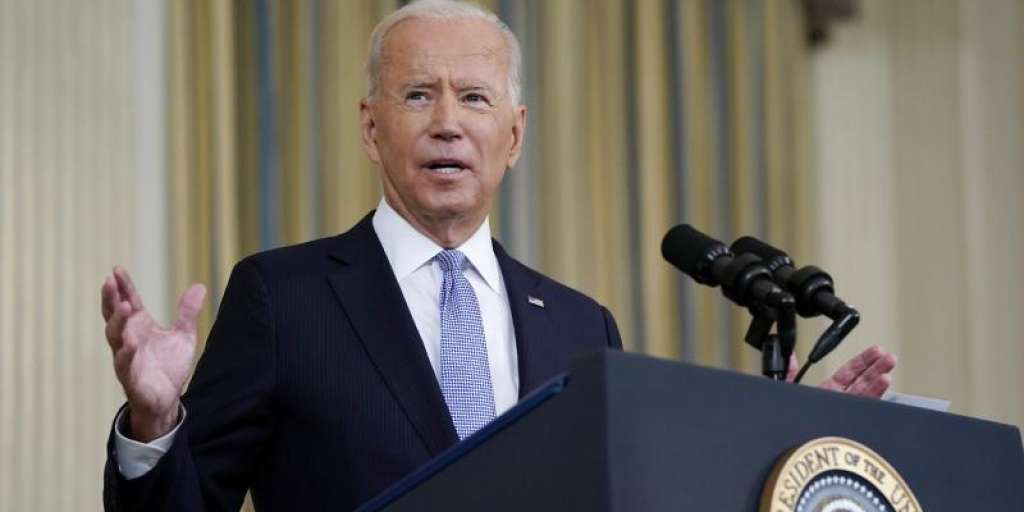The US government, led by Joe Biden, wants to dig into its pockets to modernize its infrastructure and expand social benefits. Two billion packages are planned. But despite deadlines approaching, the projects are shaky. Trouble threatens elsewhere, too.
The basics in brief
- In the eagerly awaited week in the US Congress, President Joe Biden once again announced two massive investment packages planned.
“Both should be embraced and will have a huge impact,” Biden said Friday at the White House. Next Monday, the House of Representatives can make a decision on the infrastructure package he’s started — but the schedule has yet to be finalized. The decision on the second big package, in which Biden wants to invest extensively in families, education and social affairs, on the other hand, may proceed, the president acknowledged Friday. Biden said that the negotiations are currently experiencing a stalemate. “It will take some time.”
When he took office, Biden presented plans for billions of dollars in investments in the nation’s infrastructure and welfare systems. Since Republicans had reservations about the massive spending from the start, Biden and his Democrats divided the plan into two packages.
The package with classic infrastructure investments, which will modernize roads, bridges and other transportation and energy networks in the United States, was already passed by the Senate in August after months of negotiations – with the support of Republicans. Now the final vote in the House of Representatives is still pending. New investments in infrastructure are set to reach about $550 billion over the next few years. In total, including previously budgeted funds, the package is worth more than a trillion dollars.
The second package provides for the expansion of social benefits in the country. For example, Biden wants to invest more in education and childcare, support families more and give them tax breaks, while at the same time taking money into the fight against the climate crisis. This package is worth $3.5 trillion, also spread over several years. These projects will be funded by tax increases for higher earners and more consistent collection of taxes owed. Biden reiterated Friday that the expenditures were fully funded.
This second package was vigorously opposed by the Republicans. Therefore, Democrats want to use a special parliamentary procedure to pass it through Congress themselves. However, they have a very narrow majority in both houses, and their plans are also controversial. Some moderate Democrats criticize high spending, while some progressive Democrats would like more. The latter have threatened to disrupt the infrastructure package unless the second, larger package is secured at the same time. On the other hand, moderate Democrats urged to put the infrastructure package on the voting agenda.
So, Democratic House Speaker Nancy Pelosi promised as a compromise that the infrastructure package would be voted on by Sept. 27, this Monday — hoping that by then there would be a row over the second package as well. resolved. So time is of the essence for a comprehensive solution.
In the past few weeks, there have been painstaking negotiations about the project, in which Biden also participated extensively in order to organize the majority. For him, assertiveness is central to his presidency – in the way he speaks and his legacy. In fact, large-scale investment in social benefits and tax hikes for higher-income earners would be a paradigm shift for the country. With next year’s congressional elections looming, midway through his term in office, time is of the essence for Biden to overcome his primary concerns as long as Democrats still have slim majorities in both houses of Congress. At least in the Senate, there is a risk of losing a majority in the 2022 election.
Biden is also under pressure elsewhere. Democrats and Republicans are still arguing over another budget package, without which the US government will run out of money on October 1. This means that without an agreement, parts of the government will come to a halt next week. In the case of this shutdown, which often occurs in the United States, some state employees are placed on involuntary leave or forced to work temporarily without pay, and some public services can be restricted and payments suspended. The Biden government is determined to avoid all of this.
The House of Representatives had already approved this budget package a few days ago with Democrats’ votes. But in the Senate, Republicans have so far blocked it. It also provides for the suspension of the debt ceiling for the time being. According to Treasury Secretary Janet Yellen, if Congress does not raise the debt ceiling, the US government will face default next month. Yellen warned in early September that it was not possible to set a specific day, but that the government would run out of money “during October.” If the government is unable to service its debt in October, the US economy and financial markets around the world are threatened with “irreparable damage”.
The last limit expired in July, which is why the government can no longer take on any new debt to pay for its expenses. Since then, Yellen explained, “extraordinary measures” have been taken to prevent defaults.

“Tv expert. Hardcore creator. Extreme music fan. Lifelong twitter geek. Certified travel enthusiast. Baconaholic. Pop culture nerd. Reader. Freelance student.”







More Stories
The first F1 team with over $600 million
Mercedes-Benz recalls 261,000 SUVs
With a private cabin Markets: Aegean flies on long-haul flights with the Airbus A321 LR